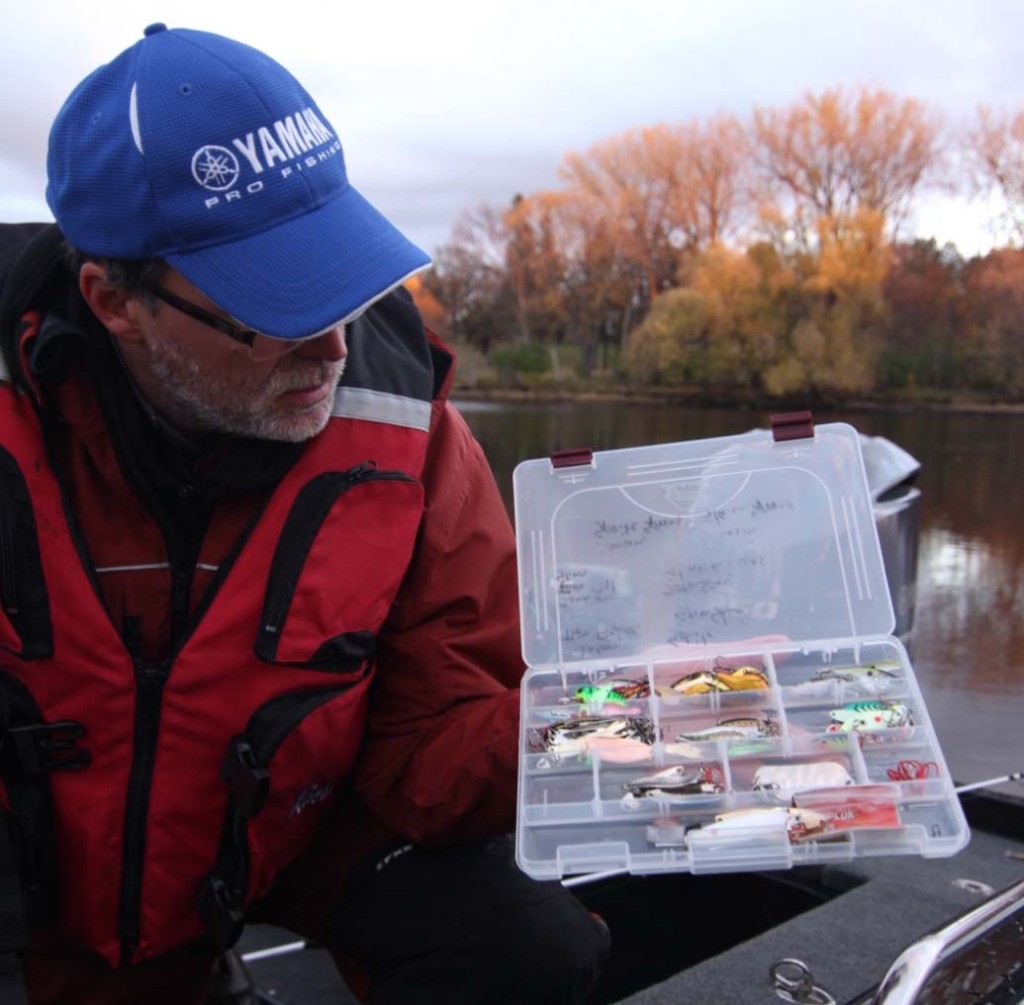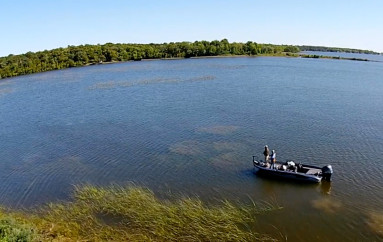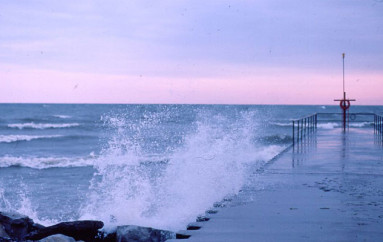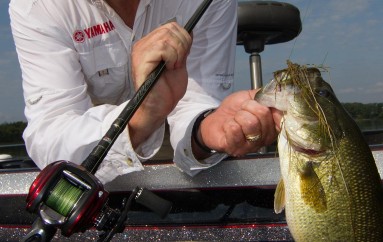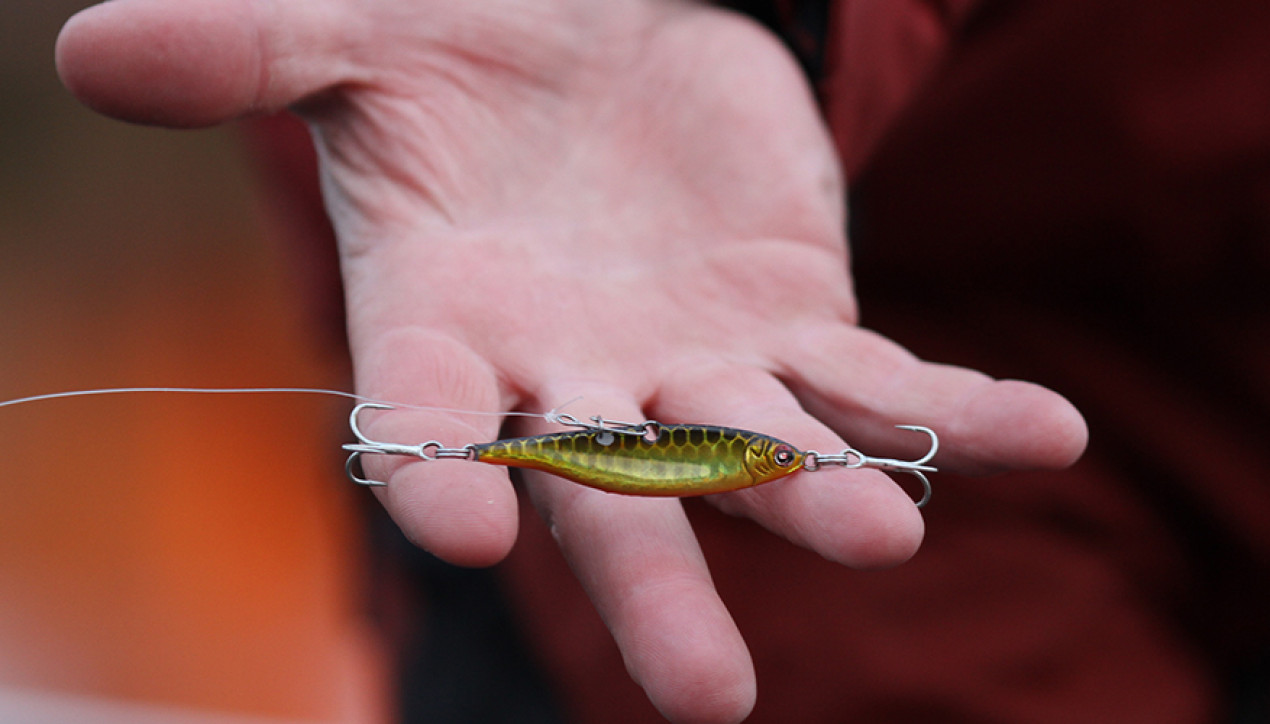
Casting Metal For Late Season Bass
Rethink spoons as an effective search bait for cold-water bass
By Steve Pennaz
When most anglers think of spoons, images of grandpa’s tackle box and Canadian fishing trips come to mind. Or maybe deep vertical jigging for bass on reservoirs.
Fair enough, spoons are the go-to bait when you spy big schools of bait and bass on your electronics and can hover directly above, dropping metal on their heads. But spoons are more than old school baits limited to vertical fishing applications.
For example, following turnover, with dissolved oxygen and temperatures more evenly distributed on water bodies than the rest of the year, bass can be anywhere. The key to the program is then covering a lot of water to find roving wolf packs of bass on the bite.
One good way to find late season bass is by casting metal.
The notion of casting spoons for bass may seem strange at first, but it’s a great way to cover a wide swath of both the horizontal and vertical water plane, making them the perfect fall and winter search bait, allowing anglers to probe multiple depths quickly and effectively. Plus, the weight and profile of spoons make them a common sense choice for casting into the wind. They’re aerodynamic and cast a mile, especially when coupled with a superline like Berkley Fireline.
As late-season bass move deep and feed predominantly on baitfish, there’s nothing like a spoon to reach deep water quickly and mimic what they’re eating. It’s a more instantaneous presentation than throwing a jig, and fish seem to inhale spoons in a way that’s more aggressive, perhaps instinctual.
In terms of locations, I key in on isolated rock piles, points, secondary points and breaklines with deeper water nearby.
Bait Selection
Not all spoons are created equal. In-Fisherman editor-in-chief Doug Stange divides them into three main categories: slab spoons, horizontal spoons and “big butt” spoons, which are heavily-cupped and bottom heavy, like Eppinger’s classic Dardevle or Johnson’s Sprite.
Stange talks of the “cycle time of lures,” a description of the orientation and duration of how they fall through the water column. Slab spoons cycle quickly, falling almost straight down; horizontal spoons fall less quickly, fluttering off to the side; and ‘big butt’ spoons provide a combination of both, typically with a more pronounced, almost zig-zag
wobble.
Stange says the main thing to remember when fishing spoons is to control depth and speed; everything else will follow. He encourages anglers to focus on one color, carrying many different profile and weight spoons to discover what the fish prefer. He adds that size and vibration is often more important than color. Personally, I jump back and forth between the Johnson Splinter Spoon, part of Stange’s slab spoon category, and the Johnson Splinter Spoon, a horizontal, fluttering bait.
The Johnson Splinter Spoon offers a rhythmic darting action on the retrieve due to its asymmetric, flat profile. When allowed to fall on slack line, it flutters less than the Slimfish, falling faster to standstill. The Johnson Slimfish offers a tight, erratic action on the retrieve thanks to built-in fins. When jigged or allowed to fall on slack line, it flutters horizontally.
As a general rule of thumb, I fish either spoon style in ¼-ounce in waters 10 to 20 feet deep and ½-ounce for waters over 20 feet.
As far as colors go, my bass fishing experience with spoons tells me the four go-to colors are Chrome, Nickel Blue, Firetiger and Racy Shad. For natural lakes I come back to Perch and Gold. The most important factor of color selection is simple. Match it to what they’re eating.
Recommended Gear
I prefer throwing spoons on spinning gear for longer casts. A 7’ to 7’4” rod with a solid backbone and soft tip is perfect. A reel with a larger, wider spool can also be helpful to increase casting distance. The real key, though, is using a superline like Fireline.
I’ve seen how Fireline behaves underwater at the Berkley lab and their line scope reveals only a slight curve in the line, much like a fast action rod under a load, even at considerable depths. That translates to immediate hook setting, even in deep waters.
In situations when I’ve used a baitcaster to fish spoons, fluorocarbon has proven the best choice.
But no matter what rod setup I’m using, I always run a 10 to 12 inch fluorocarbon leader
tied to an Invisiswivel attached to my mainline to prevent any line twist, a common problem when fishing spoons.
Final Word
I’ll admit, spoons are a class of baits that are hard to fish if you’ve never fished them before. My advice? Take a selection of spoons in different weights and colors out on the water and fish nothing else that day. Spend enough time with them and you’ll discover there’s really no mystery to the old-school baits at all. In fact, taken out of the vertical realm and cast, they are very much an overlooked producer of both quality and quantities of late-season bass.

